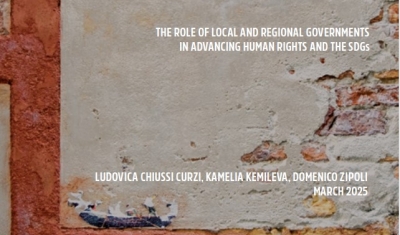New Human Rights Guidance on the Use of Less-Lethal Weapons


philippe leroyer
15 October 2019
As recent events in Hong Kong or Iraq demonstrate, use of force during assemblies raises major challenges under international human rights law (IHRL).
While law enforcement officials frequently use less-lethal weapons during assemblies, international guidance on their design, production, procurement, testing, training, transfer, and use was lacking.
The United Nations Human Rights Guidance on Less-Lethal Weapons in Law Enforcement issued by the Office of the United Nations High Commissioner for Human Rights (OHCHR) – the outcome of research and broad consultations carried out under the auspices of the Geneva Academy and the University of Pretoria – fills this gap.
Promoting Lawful Use and Accountability
Less-lethal weapons include police batons, chemical irritants such as pepper spray and tear gas, electroshock weapons such as TASER, and water cannon. They are defined in the Guidance as weapons whose ordinary use offers a substantially reduced risk of death when compared to conventional firearms.
Based on international law, in particular, IHRL and law enforcement rules, as well as good law enforcement practice, the Guidance provides direction on what constitutes lawful and responsible design, production, transfer, procurement, testing, training, deployment, and use of less-lethal weapons and related equipment, and promotes accountability.
It is aimed at a wide range of stakeholders, particularly states and law enforcement agencies, as well as weapon manufacturers, human rights mechanisms, private security companies, police oversight bodies, and human rights defenders, along with individuals seeking a remedy for human rights violations caused by less-lethal weapons.
‘This new Guidance meets an important need. We believe it will prevent unnecessary harm, improve accountability and help to ensure people can protest while being protected against unnecessary or disproportionate harm’ explains Marco Sassòli, Director of the Geneva Academy.
Research and Consultations under the Auspices of the Geneva Academy and the University of Pretoria
This Guidance is the outcome of research and broad consultations carried out under the auspices of the Geneva Academy and the University of Pretoria, in particular, its Institute for International and Comparative Law in Africa (ICLA) and its Centre for Human Rights.
A group of experts – academics, representatives of United Nations (UN) agencies and other international organizations, UN special procedures mandate-holders, members of UN treaty bodies, law enforcement officials, experts in police oversight, representatives of non-governmental organizations, civil society and manufacturers – helped to draft the Guidance. An inclusive consultation process allowed a broad range of stakeholders to provide input and comment on successive drafts, whether in writing or during expert meetings and consultations in Cambridge, Geneva, and Pretoria.
‘It is a significant step forward that less-lethal weapons and related equipment have become widely available in recent years, as an alternative to, especially, firearms and the technology continues to develop. At the same time, less-lethal weapons can easily be misused or abused. The Guidance is aimed at ensuring that only appropriate force is used, if force is to be used at all’ stresses Christof Heyns, Professor at the University of Pretoria and convenor of the expert group who drafted the Guidance.
Launch in Geneva
The United Nations Human Rights Guidance on Less-Lethal Weapons and Related Equipment in Law Enforcement will be launched in Geneva on 25 October 2019 in an event co-organized with OHCHR, the University of Pretoria, and the Permanent Mission of Switzerland to the UN in Geneva.







